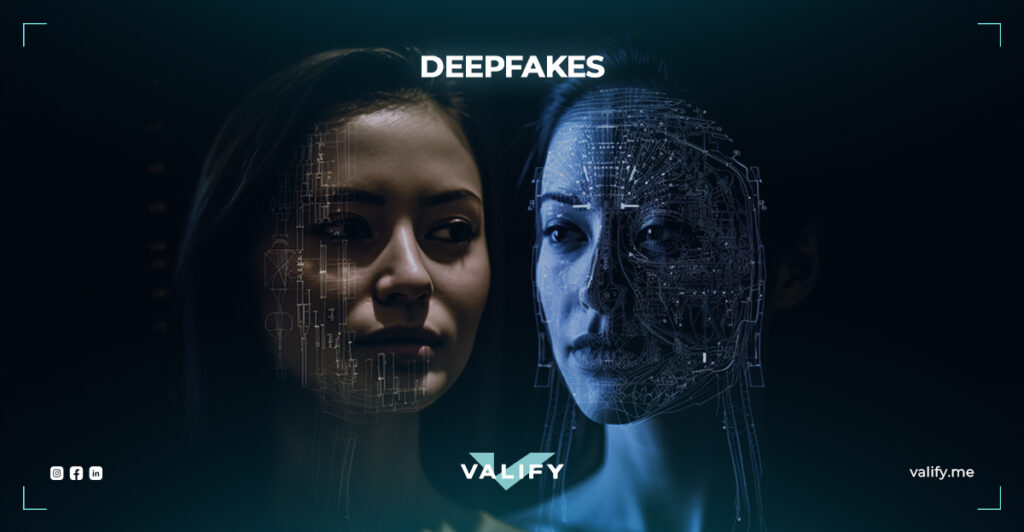Deep Fakes

From creating fake images to mimicking people’s voices, deepfakes represent a threat to the world as we know it today.
Companies worldwide are facing more cybersecurity issues by the day. This issue will magnify if they don’t start understanding what they’re getting into. To start with, as reported by Hong Kong police, a worker at a multinational firm was tricked into paying $25 million to fraudsters who posed as the company’s chief financial officer in a video conference using deepfake technology. Yes, deepfake technology can also create visuals and mimic the voices of people.
To understand the volume of the issue we are entering, we need to first understand:
What is deepfake technology?
Deepfake technology leverages advanced artificial intelligence (AI) algorithms, particularly deep learning techniques, to manipulate or generate synthetic media that convincingly mimic real people or events. This includes, but is not limited to, videos, images, audio recordings, and even text.
How does it work?
It works by training AI algorithms on large datasets of real images, videos, or audio recordings of a specific person and then using that data to generate highly realistic simulations of that person saying or doing things they never actually said or did. This is how the process works:
- Data Collection: gathering a substantial dataset of images, videos, or audio recordings featuring the target individual whose likeness will be manipulated.
- Training the Model: utilizing deep learning algorithms, such as generative adversarial networks (GANs) or autoencoders, to analyze and learn patterns from the collected data.
- Synthesis: generating the deepfake content by combining elements from the target individual with the desired content, such as a different face on an existing video.
- Refinement and Iteration: fine-tuning the deepfake content to enhance realism and address any inconsistencies or imperfections through iterative adjustments to the model.
Opportunities vs. Threats
This technology can be used for various purposes, including entertainment, political manipulation, fraud, and creating fake news. The technology itself represents a great breakthrough in the entertainment, health care, and defense industries because of its content creation, training, and simulation capabilities. However, it portrays a chaotic scene in technology and cybersecurity, as misinformation, fraud, identity theft, and privacy concerns can lead to major complications in the fintech industry, for example.
As technology evolves massively, firms need to start taking action to avoid the chaotic scene that was previously illustrated.
Actions to protect companies:
- Advanced Detection Tools: Invest in deepfake detection software and technologies that utilize AI-driven algorithms to identify manipulated media and mitigate potential risks.
- Enhanced Authentication Mechanisms: Implement robust authentication protocols, such as facial recognition, liveness detection, or multi-factor authentication, to strengthen access controls and prevent unauthorized use of sensitive data.
- Regulatory Compliance: Stay abreast of evolving regulatory frameworks governing data privacy, cybersecurity, and digital content, ensuring compliance with relevant laws and regulations to mitigate legal risks.
Deepfake Technology in Fintech and Cybersecurity
The rise of deepfake technology has created unprecedented challenges for the fintech industry and businesses globally. By leveraging AI-driven manipulation, attackers can deceive stakeholders, compromise security, and cause reputational damage. Businesses must stay proactive by investing in deepfake detection tools, in theliveness detection for identity verification, and adhering to data privacy regulations. These measures not only protect sensitive information but also foster trust in an increasingly digital world.
As deepfake technology advances, its influence on different sectors and society will become more significant. Although it offers exciting prospects for creativity and innovation, the rise of fake content emphasizes the crucial requirement for robust cybersecurity measures and attentive oversight. By comprehending the challenges posed by deepfake technology and deploying thorough defense strategies, organizations can navigate the complex dimensions of digital manipulation with greater subtlety and resilience.
Published on: March 19, 2024





